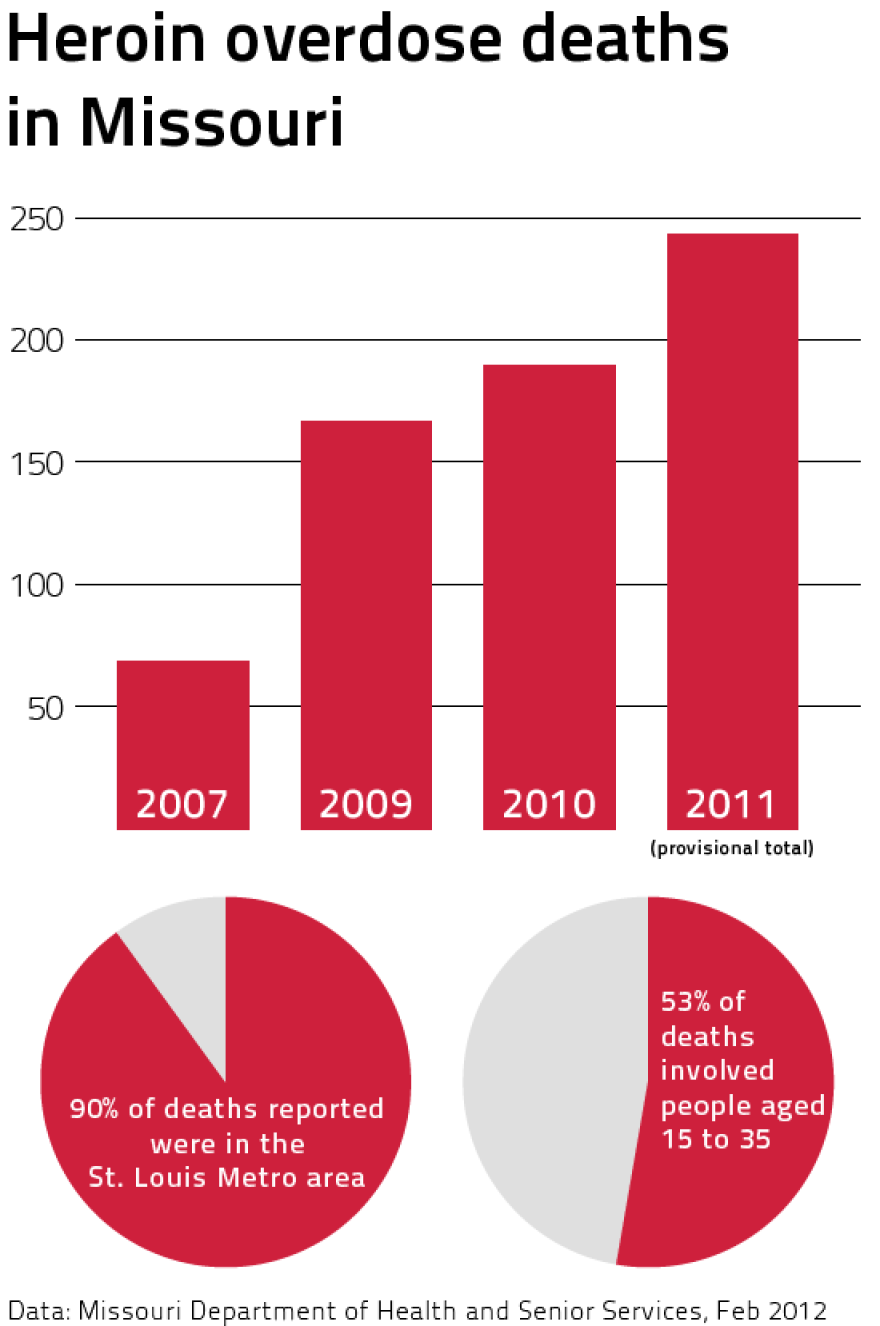Experts who study drug trends say the presumed fatal heroin overdose of actor Philip Seymour Hoffman shines the spotlight anew on the need for society to come to grips with widespread heroin abuse across the nation and in St. Louis.
Among those who have studied the issue is Theodore “Ted” Cicero, a professor in neuropharmacology in psychiatry at Washington University Medical School. He has tracked patient trends in 150 drug treatment facilities nationwide for more than seven years.
“The death points out the tragic form that this illness can create,” he says. “It’s too bad that we talk about it (only) when someone overdoses,” he said. Cicero added that heroin abuse has risen sharply in just one year, based on the fact that 20 percent of people visiting drug clinics last year were seeking help for heroin, compared to 10 percent the year before.

“We’ve been monitoring (the situation) in St. Louis, and unfortunately, it doesn’t show any difference from other areas of the country. Heroin use has spread from inner city poor areas, primarily of minority populations. It’s now a majority population problem in suburbs and rural areas,” Cicero said.
He said the road to heroin addiction typically begins with prescription drugs, such as OxyContin and other sources of opiates. Due to a crackdown on prescription trafficking , users begin to turn to heroin.
“It’s a cheaper alternative to prescription drugs and you can get a much bigger high," Cicero said.
More usage, more problems
Along with increased heroin usage comes an increase in overdoses. In 2012, the Missouri Department of Health and Senior Services issued a reportwhich revealed that the number of deaths related to heroin overdose had risen significantly in four years – from 69 in 2007 to 244 in 2011. The report called the St. Louis region a "hot spot." The report echoes Cicero's observation that the problem, once common largely in inner cities, is now occurring frequently in St. Louis suburbs.
Philip Seymour Hoffman is presumed to have died of an overdose at age 46. That's a bit older than the average ages of heroin-related deaths in Missouri. According to the Health and Senior Services report, 53 percent of all victims of heroin-associated deaths across Missouri were between the ages of 15 and 35. This age group represents only 27 percent of the state's population, the report said.
“It’s an extremely dangerous drug, and there is very little margin of safety if you play with it,” Cicero said.
He said Missouri is typical of others states in that too few resources are targeted at those needing help.
Young, middle class people are often told about the harm of marijuana and certain other drugs, Cicero said, “but we have never really focused on heroin because it wasn’t a problem. It’s now a big problem. We need to do more to educate people about the dangers.”
Cicero acknowledged that several areas school districts have held town-hall style meeting to call attention to heroin.
Options for recovery
While there may be no sure cure for heroin addiction, there are several area programs that help put victims on the road to recovery. One local effort that Cicero singled out is Assisted Recovery Centers of America(ARCA). Owned by Percy Menzies, the company’s treatment relies on naltrezone, a drug used initially to manage alcohol dependence and later found to be successful in controlling opioid addictions. Naltrezone is a DuPont product.
The form used at ARCA goes by the band name of Vivitrol. Menzies said it a “game changer” because it has helped to move society toward “the view that alcohol and some other addictions are diseases rather than symptoms of weak willpower.”
Menzies uses Vivitrol to treat about 300 area heroin addicts a year. Their recovery includes a combination of intense treatment and counseling. They eventually are able to get by with a single shot of Vivitrol a month. Most, he says, eventually are able to “go back home, work and take care of their families.”
The treatment isn’t cheap, costing nearly $1,000 a shot. But Menzies says that monthly cost is “really a small amount” in relation to tragic consequences like Hoffman’s. Still, this solution isn't available to everyone. Some people may have the resources to buy Vivitrol if they choose to use it, or they could get it as part of their health benefits. The drug is also available through Medicaid. But in Missouri that option leaves out some financially disadvantaged people who don’t qualify for the federal-state health insurance program.
Many area young people also get free access to services to address heroin addiction through a one-quarter cent sales tax that some area counties have approved for mental health and drug counseling programs. One of the projects recent goals was to make about 200 additional treatment beds available.
While welcoming this effort, Cicero said it falls short of a broad effort to tackle the problem. He pointed to a decline in funding for substance abuse in mental health centers across Missouri during the Great Recession.
“We simply don’t have resources to adequately deal with the number of people who need help,” Cicero said.
Read more from Bob Joiner about the heroin epidemic.
Region is responding to heroin problem with more money for treatment



